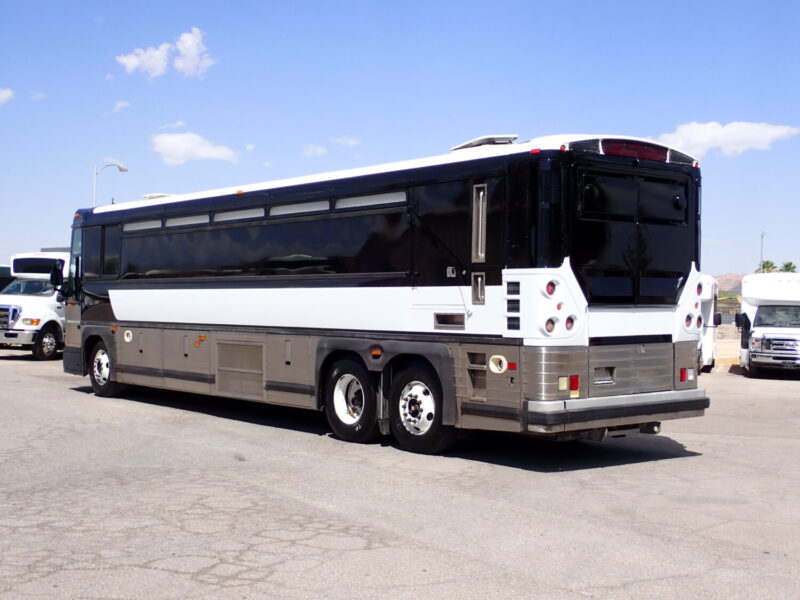 If you’re shopping for a bus, you’re probably already considering factors such as the number of passengers it needs to accommodate or whether it has sufficient luggage space, but once you start diving into vehicle listings, you’ll notice a whole lot of unfamiliar terms popping up. GVWR? Wheelbase? ADA compliant? If you’re new to the world of buses, it can all feel like a different language.
If you’re shopping for a bus, you’re probably already considering factors such as the number of passengers it needs to accommodate or whether it has sufficient luggage space, but once you start diving into vehicle listings, you’ll notice a whole lot of unfamiliar terms popping up. GVWR? Wheelbase? ADA compliant? If you’re new to the world of buses, it can all feel like a different language.
Here’s a quick breakdown of some common bus specs and what they mean!
GVWR (Gross Vehicle Weight Rating)
GVWR is the maximum total weight a bus can safely carry. That includes the vehicle itself, passengers, fuel, luggage—everything. This number is important because overloading a bus can lead to performance issues and safety concerns. When comparing buses, make sure the GVWR supports your typical passenger load and any gear you’ll be hauling.
Wheelbase
This is the distance between the front and rear axles. A longer wheelbase often means more space and a smoother ride, but it also means wider turns and less agility. A shorter wheelbase can make maneuvering easier in tight spots, which may be ideal for operating in busy urban areas.
Seating and Layout
Seating capacity is about more than just numbers. Some buses have fixed rows while others offer flexible layouts with foldaway or removable seats. If you need space for wheelchairs, extra storage, or standing room, layout options will matter just as much as seat count.
Engine Type
Diesel and gas engines each have their strengths. Diesel engines are known for longevity and fuel efficiency, especially for long-distance travel. Gas engines tend to be more budget-friendly upfront and easier to maintain for short, local routes. Consider how and where your bus will be used to help guide this decision.
ADA Features
If your passengers include individuals with disabilities, you’ll need a bus that’s ADA compliant. Look for features like wheelchair lifts or ramps, securement stations, and easy entry and exit points. Accessibility isn’t just about compliance; it also improves the ride experience for everyone.
Transmission
Most buses today come with automatic transmissions, which are ideal for ease of use and less driver fatigue. If you happen to come across a manual transmission bus, ensure that your drivers are trained to operate it safely.
When you’re ready to make a purchase, having a clear understanding of these terms will help you feel more confident in your decision. If you’re still not sure where to start, the team at Las Vegas Bus Sales is here to help. Browse our inventory of new and used buses online and let our knowledgeable staff guide you to the perfect fit for your transportation needs.
